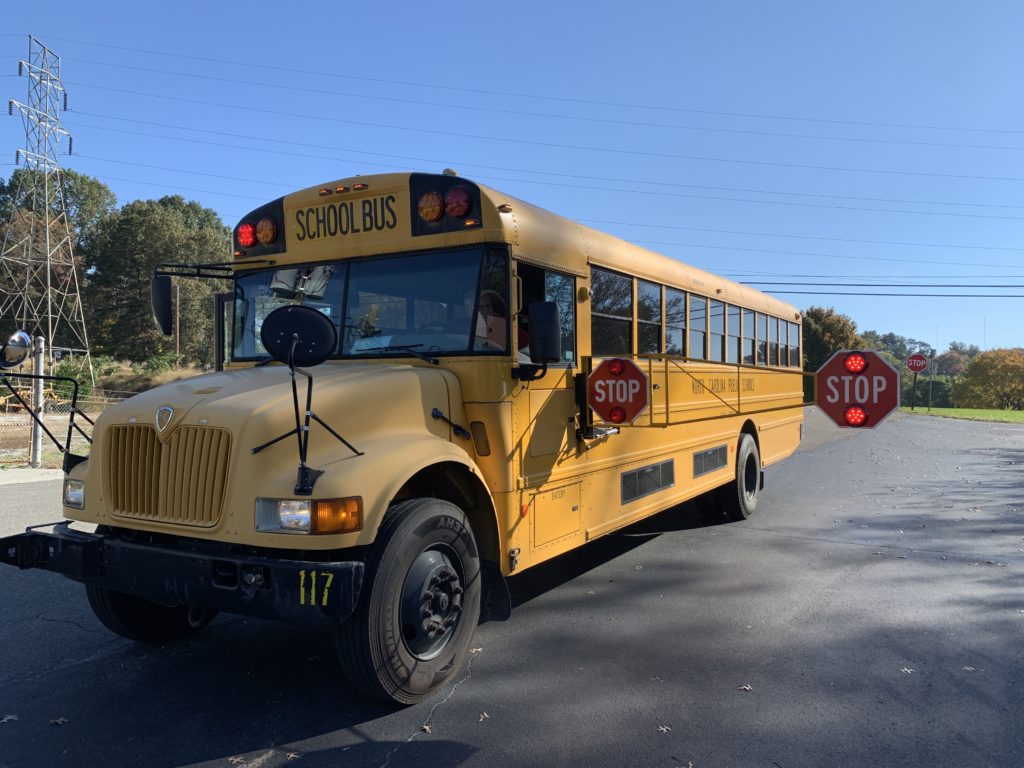|
|
The Mount Airy City Schools District was selected last year to participate in a Smart School Bus Safety Pilot Program. $115,000 was allocated to the district in House Bill 1105, to begin the three-year program no later than Nov. 23, 2020. Now, the pilot may be expanding, adding 24 more districts and charter schools to the next round of funding.
“It’s been the best thing that has happened in the 27 years that I’ve been employed here,” said Jon Doss, transportation coordinator at Mount Airy City Schools.
The current House budget proposal allocates $18,148,000, to add 24 more districts and charter schools to the 2021 pilot program. Additional language in the budget proposal, which was not found in House Bill 1105, includes providing internet connectivity on school buses for students.
The purpose of the pilot is to improve communication, increase safety, optimize bus routes, enable tracking of the bus and its riders, and — in the event of a COVID-19 infection — help with contact tracing.


The smart buses in Mount Airy have been on the road since spring of 2021. Doss believes the district was a good fit for the pilot program because a majority of students continued with in-person learning during the COVID-19 pandemic, so there were students to ride the bus. They are also a relatively small district — with 14 buses to outfit with the technology, it was easier to experiment.
Doss hopes this program continues long after his time at school is finished. It’s something all school districts would benefit from, he said, and if you have the opportunity to try it, “The smart bus technology will be your best friend.”
What can smart bus technology do?
To begin the program, Mount Airy City Schools received bids from six different vendors to offer their technology services. They chose Traversa, a student transportation software from Tyler Technologies, and paired it with PowerSchool software, which holds all the district’s students’ information.
When a student steps on the bus they first stop at a mobile temperature check station. Once it’s determined they are okay to continue to school, the student scans their radio-frequency identification (RFID) card on an access pad and the time stamp registers on the student’s profile. There is an accompanying parent app that comes with this technology, and this information is then available to that student’s parent on the app. The same goes for when the student exits the bus at school. The RFID card can also be used for other school activities, access to the building, in the lunch line, and as a library card.


The smart bus technology includes a tablet loaded with information for the bus driver and cameras. When a bus driver gets within 95 feet of the designated pick-up or drop-off area, a student’s profile pops up providing a picture, address, any necessary medical information, and parent contact information. The bus’ connectivity to the app allows parents to get a notification once the bus is within half a mile from their child’s designated stop.
What else does Doss love about the technology? It helps with optimization of bus routes. Transportation directors are in charge of complex routing, and this software helps create safer and shorter trips. It takes into consideration the direction of a bus, trying to ensure students don’t have to cross the street. If there are any issues with the buses themselves, the drivers can take pictures, upload to the tablet and it goes to the school’s mechanic. It can save the district money and time.


Staff checking out smart bus technology. Courtesy of Mount Airy City Schools 

Jon Doss demonstrating smart bus technology to visitors. Mebane Rash/EducationNC
The pandemic has exacerbated the shortage of school bus drivers. In a survey conducted by The National Association for Pupil Transportation, the National Association of State
Directors of Pupil Transportation Services, and the National School Transportation Association, 51% of respondents described their driver shortage as “severe” or “desperate.” Doss believes this smart school bus system can make a difference to a lot of districts struggling with the shortage.
“It’s something that all the school districts need. We’re all suffering from shortages of bus drivers and having to use other school personnel to help fill the void,”
Jon Doss, Mount Airy City Schools transportation coordinator
He says for those substitute bus drivers, the smart school bus makes taking up a new route easier.
“This is a GPS system that will talk to you, and it will navigate you from start to finish, from the time you leave the bus lot until you are empty and back to the bus lot,” said Doss.





